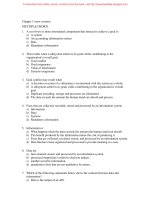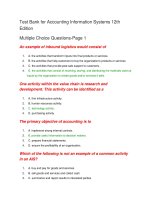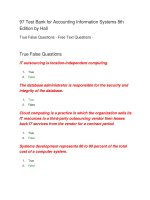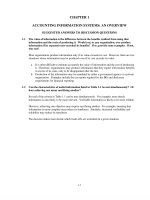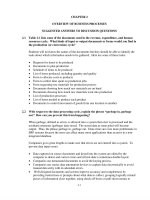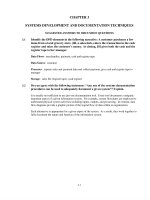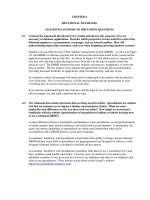Solution manual accounting information systems 12th edition by romney and steinbart CH01
Bạn đang xem bản rút gọn của tài liệu. Xem và tải ngay bản đầy đủ của tài liệu tại đây (395.22 KB, 18 trang )
Find more on www.downloadslide.com
CHAPTER 1
ACCOUNTING INFORMATION SYSTEMS: AN OVERVIEW
SUGGESTED ANSWERS TO DISCUSSION QUESTIONS
1.1
The value of information is the difference between the benefits realized from using that
information and the costs of producing it. Would you, or any organization, ever produce
information if its expected costs exceeded its benefits? If so, provide some examples. If not,
why not?
Most organizations produce information only if its value exceeds its cost. However, there are two
situations where information may be produced even if its cost exceeds its value.
a. It is often difficult to estimate accurately the value of information and the cost of producing
it. Therefore, organizations may produce information that they expect will produce benefits
in excess of its costs, only to be disappointed after the fact.
b. Production of the information may be mandated by either a government agency or a private
organization. Examples include the tax reports required by the IRS and disclosure
requirements for financial reporting.
1.2
Can the characteristics of useful information listed in Table 1-1 be met simultaneously? Or
does achieving one mean sacrificing another?
Several of the criteria in Table 1.1 can be met simultaneously. For example, more timely
information is also likely to be more relevant. Verifiable information is likely to be more reliable.
However, achieving one objective may require sacrificing another. For example, ensuring that
information is more complete may reduce its timeliness. Similarly, increased verifiability and
reliability may reduce its timeliness.
The decision maker must decide which trade-offs are warranted in a given situation.
1-1
